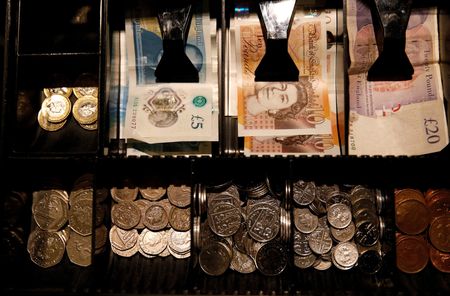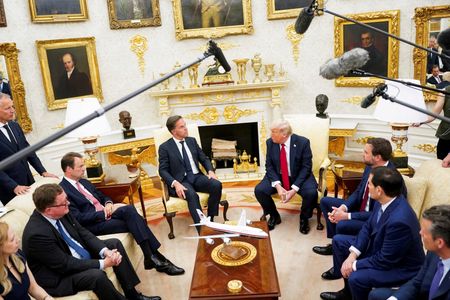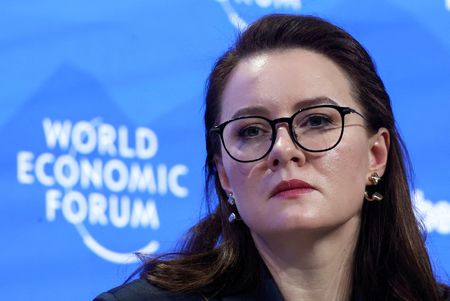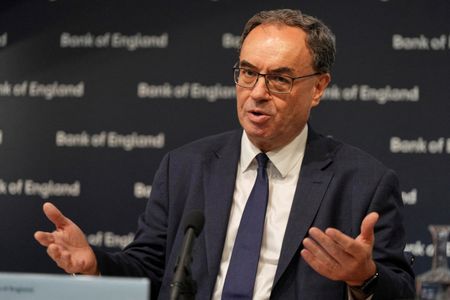LONDON (Reuters) -The pound fell on Monday, under broad pressure from investor worries about the impact on growth from U.S. President Donald Trump’s escalating trade war.
Sterling fell against the euro, which strengthened to the tune of 0.3% to 86.915 pence, even after Trump warned on Saturday he would slap a 30% tariff on goods imports from the European Union.
The euro fell against the dollar, but managed to scrape higher against the pound and against other currencies that are more closely linked with growth, such as the Australian and New Zealand dollars.
Britain already has a trade deal in place with the United States that is limited in scope, but other countries have until August 1 to strike agreements with the Trump administration, or risk getting hefty levies applied.
With that in mind, investors are looking more closely at the underlying economic picture for Britain, where the sustainability of the country’s finances are once again front of mind for many, after the government could not deliver promised cuts to welfare benefits.
“Sterling is starting to underperform a little. Fiscal policy is back in the headlines after the government failed to deliver spending cuts in welfare. Other spending cut options look limited, leaving the alternatives of tax hikes or a softening of the fiscal rules – neither of which look good for sterling,” ING strategists said.
The pound, which often trades more in line with the more volatile commodities currencies, like the Aussie and kiwi dollars, was down 0.3% at $1.3446 in late London trading.
Data last week showed the UK economy shrank for a second month in May. The inflation report this week is expected to show consumer price pressures continued to accelerate in June.
The consumer price index is expected to have risen by 3.4% last month, showing no slowdown from May’s rate, while core inflation, which excludes food and energy, is expected to have run at 3.5%, showing no change on May, according to a Reuters poll of economists.
The Bank of England does not meet again until August and, right now, money markets show traders fully expect a quarter-point cut to 4%, with one more cut before the end of the year.
(Reporting by Amanda Cooper; Editing by Susan Fenton)










